Acropora hyacinthus and Acropora cytherea are two very emblematic species of Indonesian shallow coral reefs. These two very similar corals form large tables that grow thicker when exposed to waves and current and are sometimes very difficult to tell apart. But, actually, they are not really found in the same habitat. A. cytherea prefers a more exposed environment than A. hyacinthus.
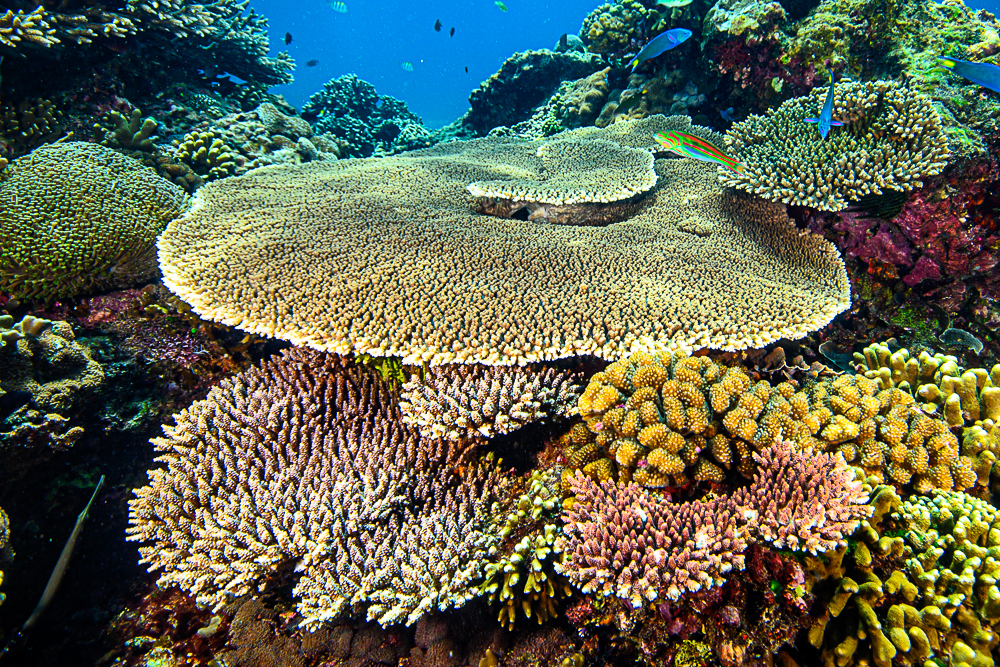
These corals are also a very important component of reef top structure. They provide shelter for large fish, White-tip Sharks, and moray eels. They also extend rocky, stable structures over sandy, rubble areas where corals can’t settle. Even when they die, they serve a very important function, as prime real estate for settling coral larvae. That’s why they’re also a prime target for Drupella snails and Crown of Thorn Starfish (Acanthaster plancii).
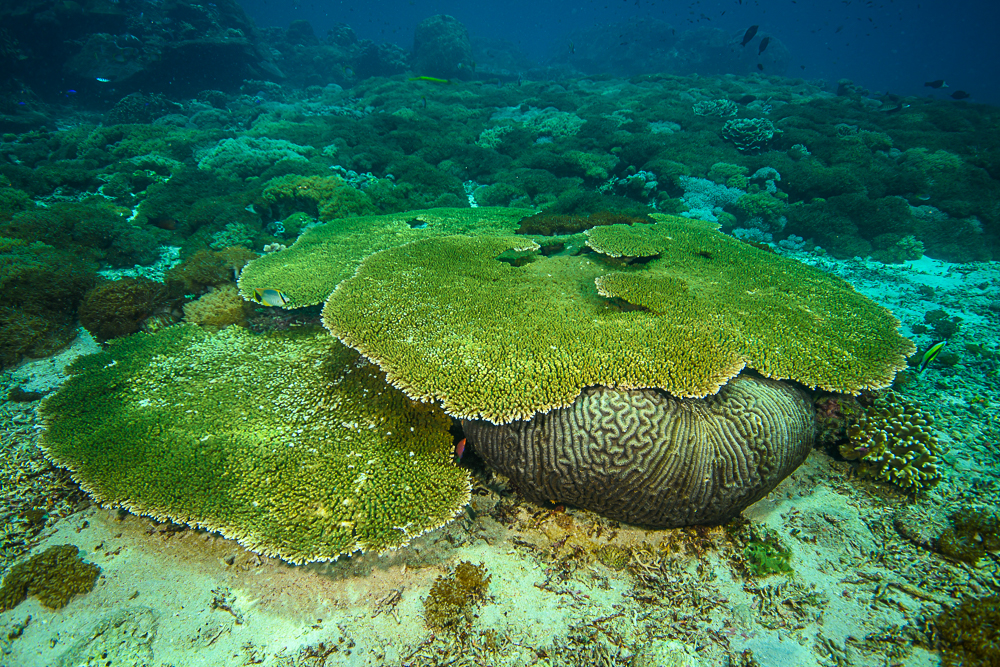
Acropora cytherea is not a very common species in Indonesia. There are only a few places where you can find both similar tabling species living together. Acropora hyacinthus is much more common as it prefers shallow, bright, and slightly calmer water. Acropora cytherea prefers slightly deeper, high-energy, high-flow waters. But in the waters of southern Bali, where the water is more ‘Oceanic’, colder, and more exposed to swell and high flow, we commonly find them together. A. cytherea resides on the outer reef, and A. hyacinthus can be found on the reef flat and in lagoons.
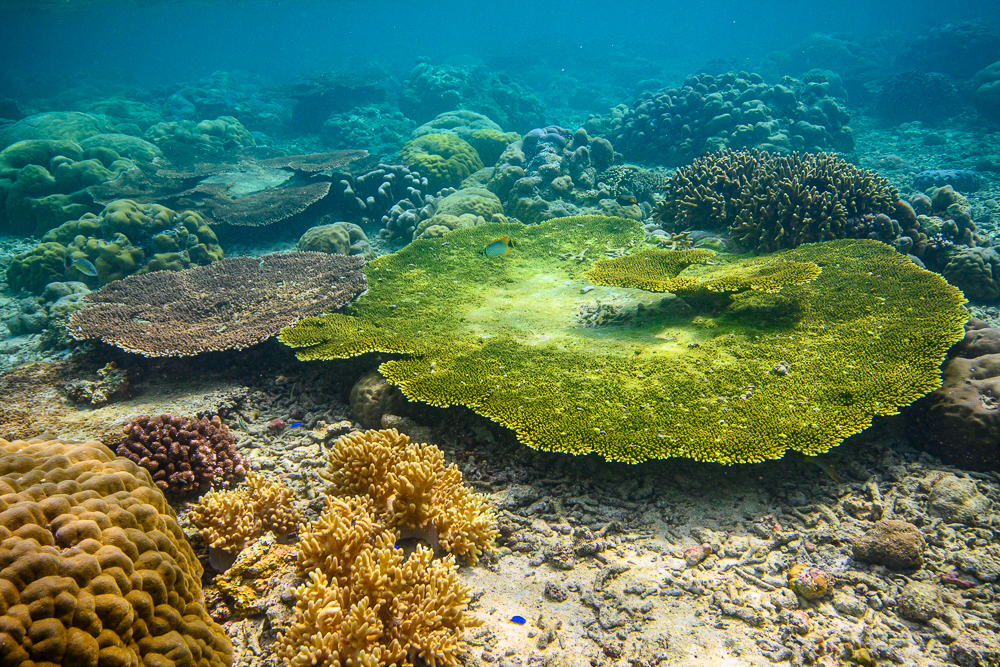
Acropora hyacinthus:
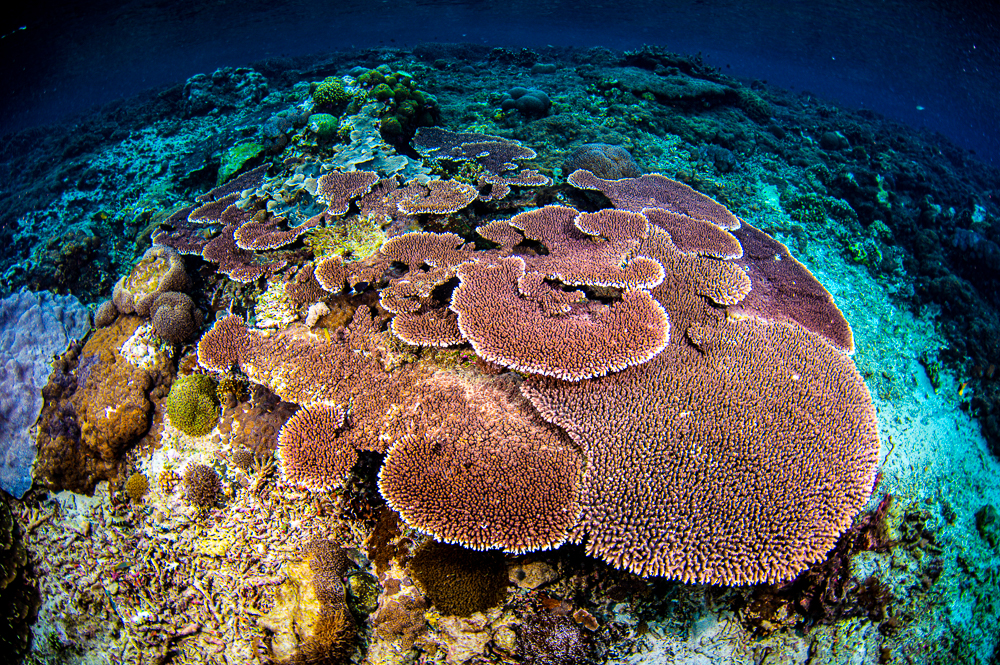
Acropora hyacinthus is a very common coral in the aquarium industry; it has been maricultured, grown, and exchanged for decades. A common commercial name for it was the ‘Red Planet’. The main common coloration is red, but it also exists in green, and also red with green irradiances. So, it’s a pretty well-known coral for aquarists.
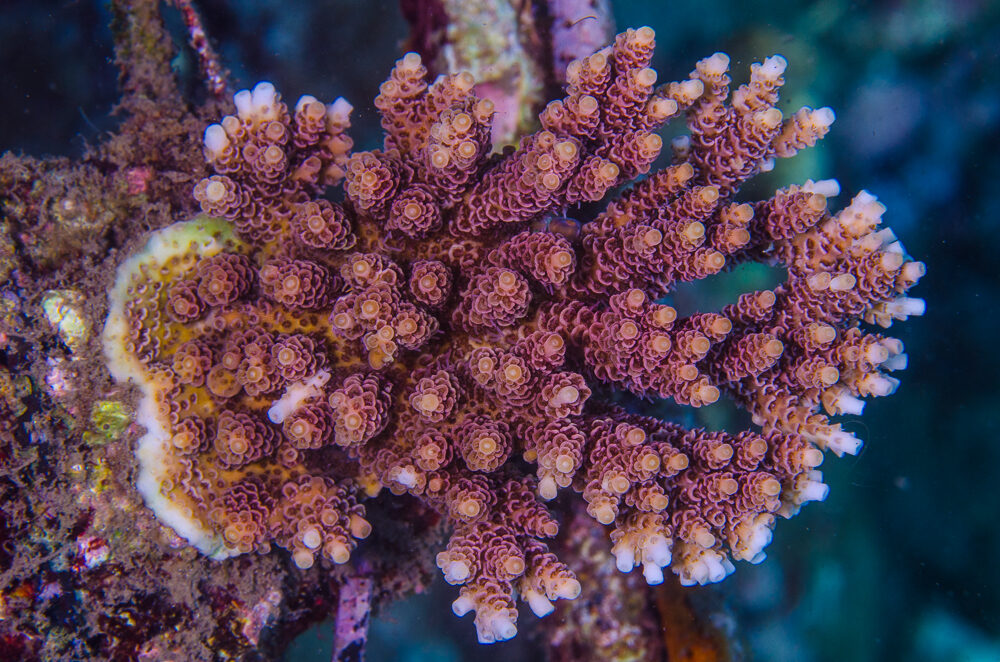
Acropora hyacinthus has a typical table-shaped with a reticular base. It features short, slender branches (although longer than those of A. cytherea). A. hyacinthus axial polyps are small, and radial polyps are dense, dislike or cup-shaped, and are arranged regularly like rosettes around the axial corallite. Branchelts are fine and upward-projecting. Axial corallites are distinct but not exsert (while very distinctive in A. cytherea).
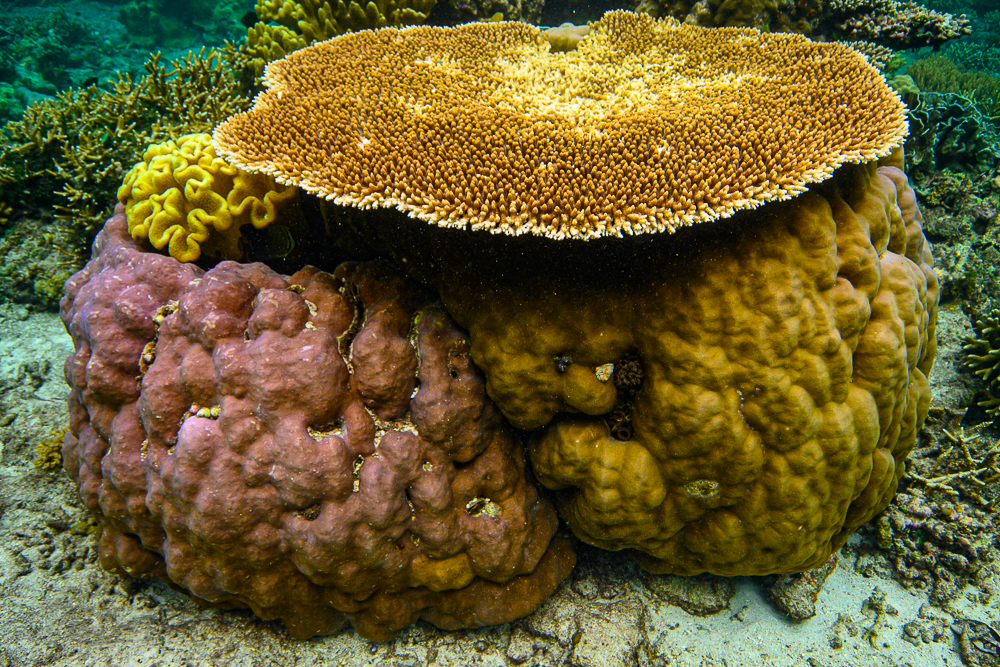
The arrangement of radial corallites in A. hyacinthus is particularly interesting, and a trait that it shares with A. millepora or A. tenuis. You might say that these radial corallites and their rosette arrangement give the impression of a crown surrounding the axial corallite.
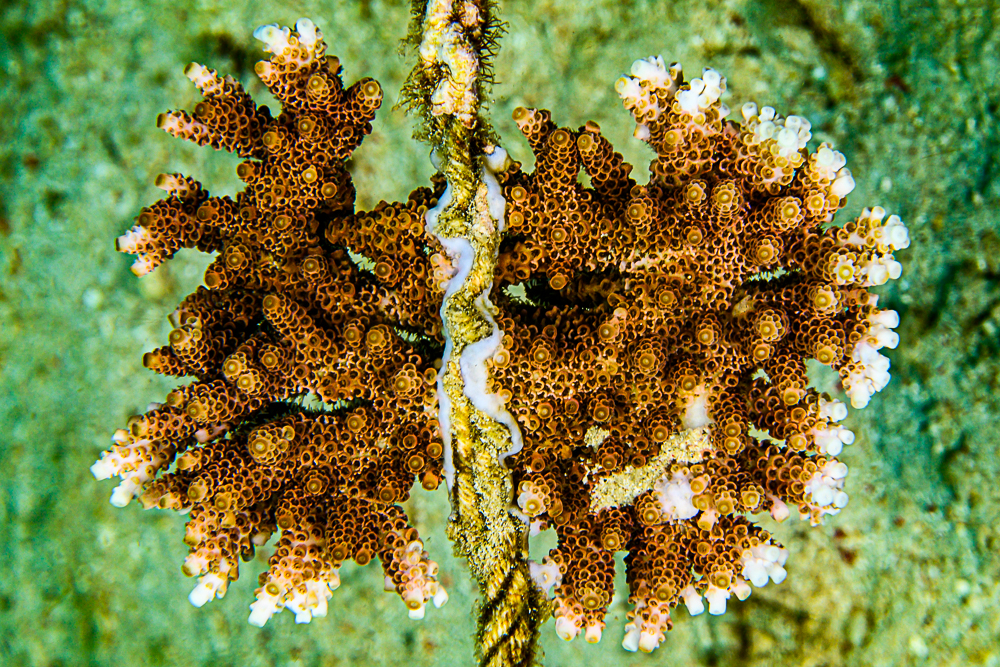
A. hyacinthus is one of the most common Acropora species throughout Indo-Pacific reefs. It is sometimes difficult to distinguish from A. cytherea, but the latter has branchlets arranged in groups and elongated, pointed radial corallite lips.
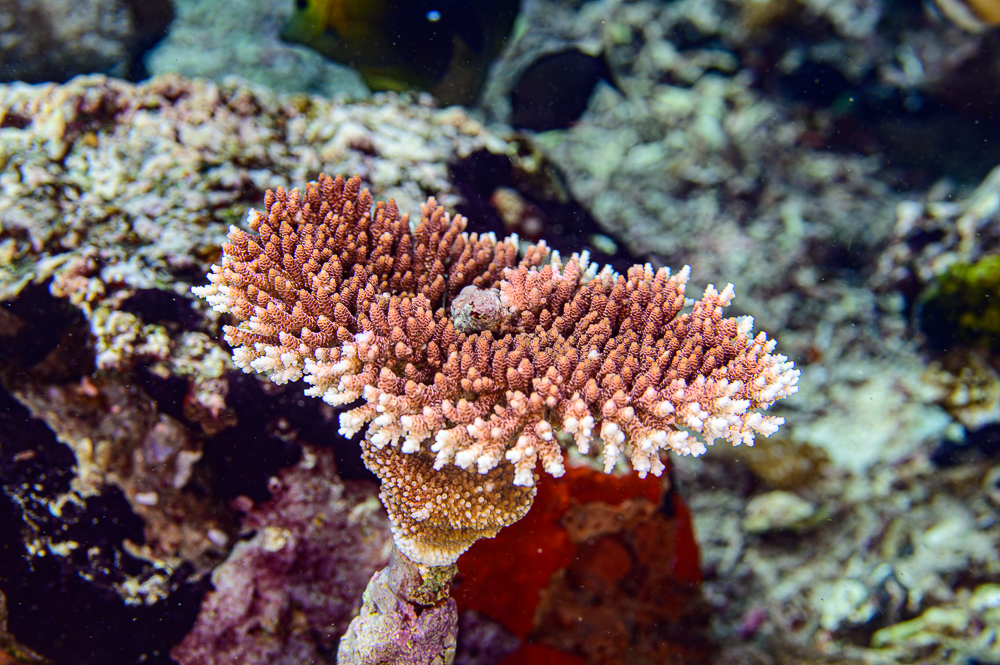
Ongoing molecular analyses are showing that this particular species is going to be broken off into many different regional species that are found to have sufficient genetic differences, even though they look quite similar. Watch for future taxonomic changes.
Acropora cytherea:
Although very common on reefs around the world, this particular species is relatively unknown among reef aquarists. The typical coloration of A. cytherea is probably not really attractive enough to draw the attention of collectors and aquarists. The most common colors are cream or green, although a common color form is dark green with slightly pinkish tips that could have great potential for aquariums.
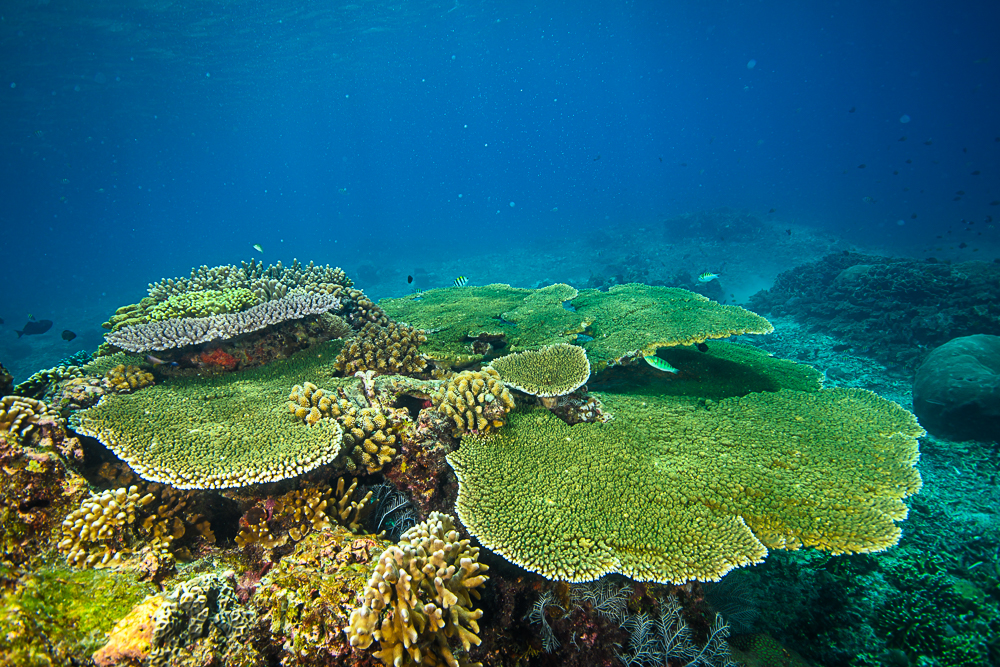
Although a widespread species, Acropora cytherea is not usually abundant in Indonesian reefs.
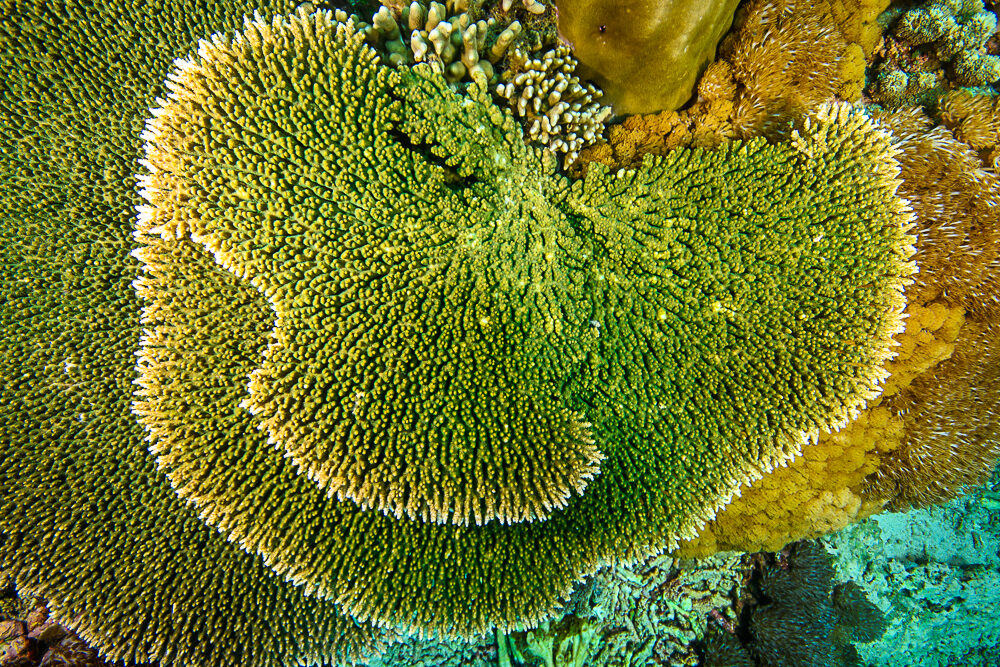
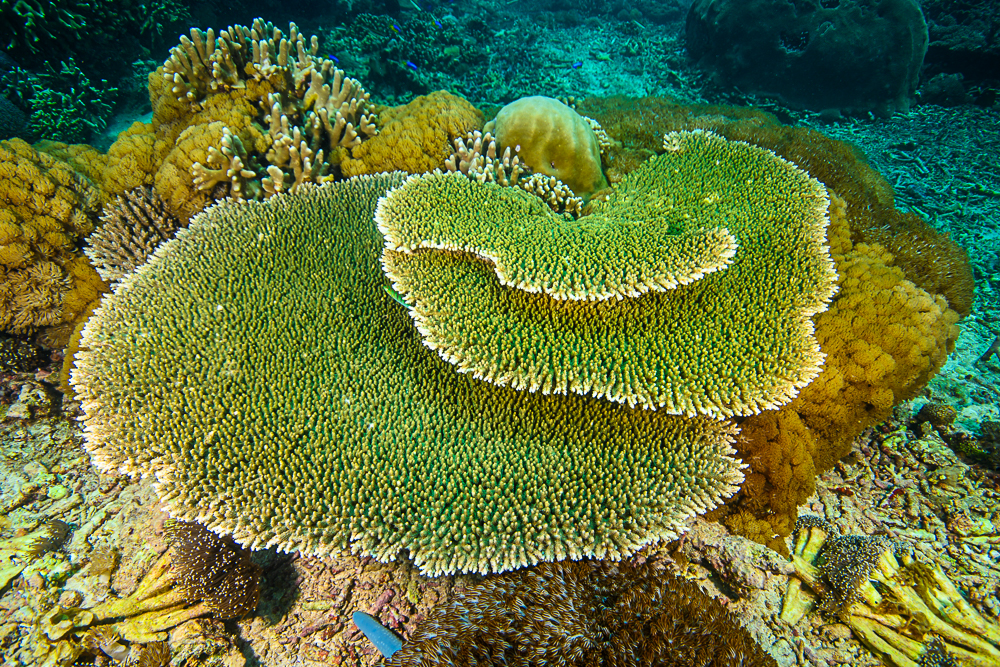
Acropora cytherea is more finely structured, has more exsert axial corallites, and usually has shorter upward branchlets than Acropora hyacinthus. Radial corallites are short, with open calyces. Tentacles are frequently extended during the day. The tip of branches may have multiple axial polyps. Multiple axial polyps and sharp radial polyps are obvious in the central colony. Radial polyps are vertically elongated and sharp.
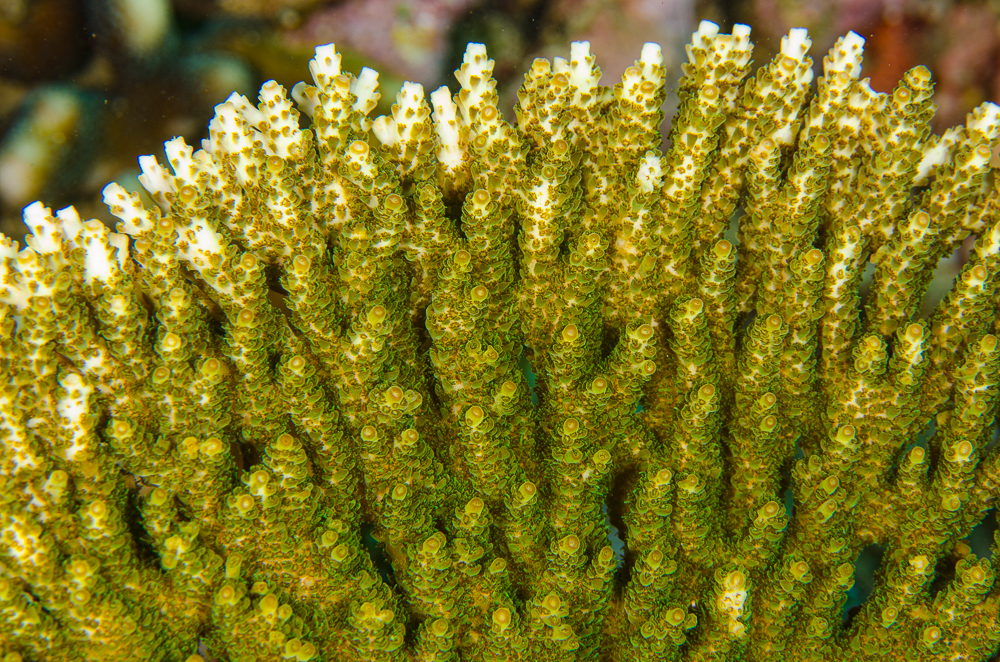
As seen in these photos, the most common coloration around Indonesia is green, pale brown/green, and sometimes we’ll find a colony with a pinkish/orange edge.
Only when A. cytheriea is encountered in a very exposed environment, where the coral’s over structure thickens, can it become difficult to differentiate it from A. hyacinthus.
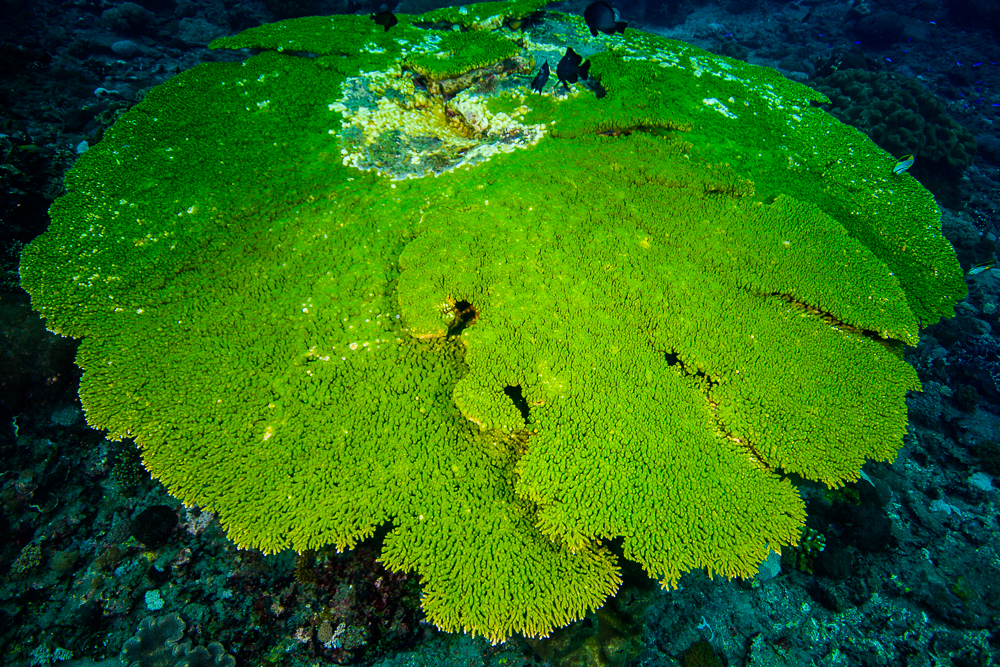
Ultimately, these two species are some important structural components of two distinct types of shallow water reefs. Still, they are just two species within a larger group of corals sharing somewhat similar characteristics. Going from table-like thin branches, toward corymbose and branching colony shape with thicker branches, you could in a way sort out A. cytherea with the shortest, thinnest branches. Then A. hyacinthus which has slightly longer branches. Then A.millepora which grows in a more corymbose colony shape to A. spathulata in almost a branching colony shape. All have very similar corallite shapes. And, finally, Acropora spicifera with its longer branchlets and lobes branches is yet one more very similar species in the mix!




